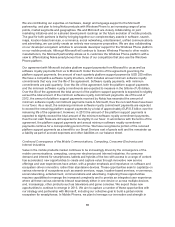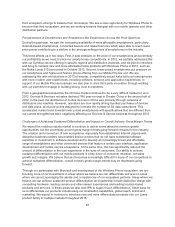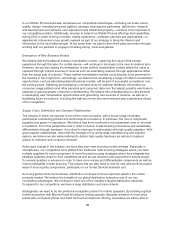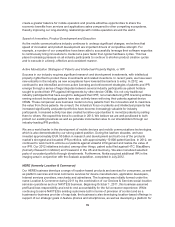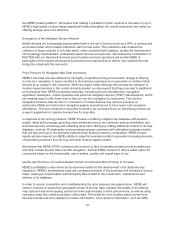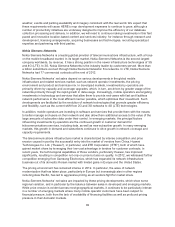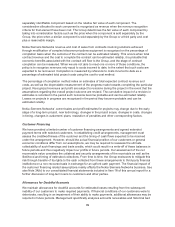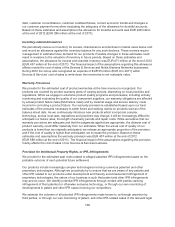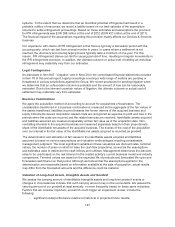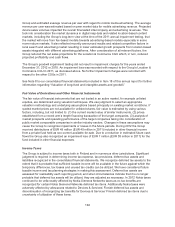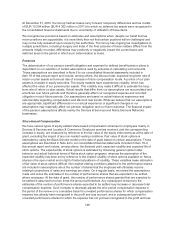Nokia 2012 Annual Report Download - page 96
Download and view the complete annual report
Please find page 96 of the 2012 Nokia annual report below. You can navigate through the pages in the report by either clicking on the pages listed below, or by using the keyword search tool below to find specific information within the annual report.As a result of its focus on Mobile Broadband, Nokia Siemens Networks divested a number of
businesses which were not in line with this strategy in 2011 and 2012.
As part of our strategy announced in November 2011, Nokia Siemens Networks also articulated a
regional strategy, identifying three markets, Japan, Korea and the United States, as priority countries,
where it has been and is targeting growth. The Middle East and Africa, where political, financial and
competitive pressures have led to particular weakness in 2011, have in turn been the focus of
turnaround efforts in 2012. In these regions, Nokia Siemens Networks has restricted business to
certain markets and certain customers focusing on profitability and improved asset management rather
than sales growth. This has contributed to a decline in net sales in both regions. In the remaining
regions, Latin America, China, Asia-Pacific and Europe, its goal has been to defend market share and
find areas for future profitable growth.
During 2012, Nokia Siemens Networks recognized restructuring charges and other associated items of
EUR 1.3 billion related to this restructuring program, resulting in cumulative charges of approximately
EUR 1.3 billion. In total we now expect cumulative Nokia Siemens Networks restructuring charges of
approximately EUR 1.3 billion by the end of 2013, virtually all of which have now been recognized. By
the end of 2012, Nokia Siemens Networks had cumulative restructuring related cash outflows of
approximately EUR 650 million related to this restructuring program. Nokia Siemens Networks expects
restructuring-related cash outflows to be approximately EUR 450 million for the full year 2013, and
approximately EUR 200 million for the full year 2014 related to this restructuring program.
Targets and Priorities
Nokia Siemens Networks plans to continue to prioritize the improvement of its profitability and cash
generation over growth in revenue. In addition, it plans to target increasing its market share in certain
growth areas such as 4G (LTE), in particular in priority countries, Japan, Korea and the United States.
Longer-term, Nokia Siemens Networks continues to target Nokia Siemens Networks’ operating margin
to be between 5% and 10%, excluding special items and purchase price accounting related items.
Cost of components and raw materials
There are several factors that drive Nokia Siemens Networks profitability. Scale, operational efficiency
and cost control have been and will continue to be important factors affecting its profitability and
competitiveness. Its product costs are comprised of the cost of components, manufacturing, labor and
overhead, royalties and license fees, the depreciation of product machinery, logistics costs as well as
warranty and other quality costs.
Product mix
Nokia Siemens Networks profitability is also impacted by the pricing environment, product mix,
including higher margin software sales and regional mix.
Its products, solutions and services have varying profitability profiles. Its mobile broadband business
offers a combination of hardware and software. These products, in particular software products, have
higher gross margins; however, the products require much higher research and development
investments. Its global services offerings are typically labor intensive while carrying low research and
development cost and have relatively low gross margins compared to its hardware and software
products. Many of its product service offerings combine elements from all business units and several
factors can influence relative gross margin.
95


